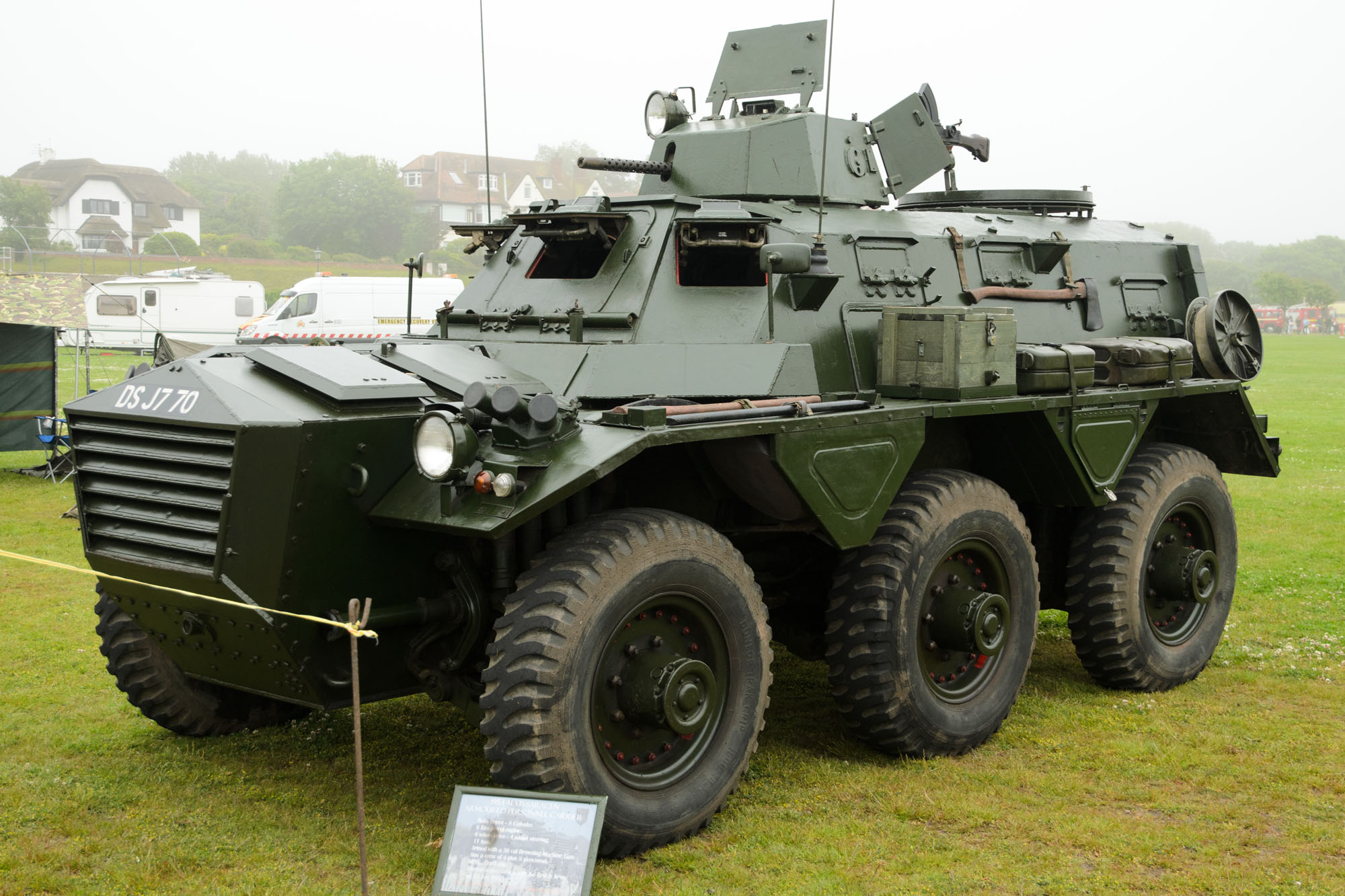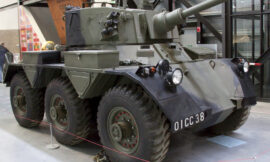The Alvis Saracen Mk1 Armoured Personnel Carrier (APC) was a prominent vehicle in the British military during the Cold War era. Designed and manufactured by Alvis, the Saracen provided transport and protection for infantry units in various operational environments. Let’s explore its features, development, and operational history:
Development and Design
The Alvis Saracen Mk1 APC was developed in the late 1950s to meet the British Army’s requirement for a versatile armored vehicle capable of transporting troops safely across rugged terrain while offering protection from small arms fire and shell splinters. It was part of a series of armored vehicles designed by Alvis, including the Saladin armored car and the Stalwart amphibious vehicle.
Design Features:
- Armor and Protection: The Saracen Mk1 featured all-welded steel armor, providing protection against small arms fire up to 7.62 mm caliber and shell splinters. Its design prioritized crew and troop safety during transport and combat operations.
- Crew and Troop Capacity: The Saracen typically accommodated a crew of two: a driver and a commander. It could carry up to ten fully equipped infantry soldiers in its troop compartment, providing mobility and protection for dismounted operations.
- Mobility: Powered by a Rolls-Royce B80 Mk6A eight-cylinder water-cooled petrol engine, the Saracen Mk1 could achieve a maximum road speed of around 72 km/h (45 mph). It featured a 6×6 drivetrain, providing good off-road capability suitable for various terrains encountered in military operations.
Operational History
The Alvis Saracen Mk1 APC saw extensive service with the British Army and other military forces during the Cold War period and beyond. Its primary role was to transport infantry troops safely to and from the battlefield and provide fire support when needed. The Saracen was particularly valued for its reliability, robust construction, and adaptability to different operational environments.
Key Operational Features:
- Military Deployments: The Saracen Mk1 served in numerous conflict zones and peacekeeping operations worldwide, including deployments in Northern Ireland during the Troubles, as well as in various British overseas territories.
- Variants: Over its service life, the Saracen Mk1 underwent several modifications and upgrades to improve its performance and operational effectiveness. These included changes in engine specifications, upgrades to the vehicle’s internal communications systems, and improvements in armor protection where feasible.
Legacy and Retirement
As military technology evolved, the Alvis Saracen Mk1 eventually began to be phased out of frontline service in many armed forces. It was succeeded by newer generations of armored personnel carriers with enhanced mobility, firepower, and protection capabilities. Despite its retirement from active duty, the Saracen Mk1 left a lasting legacy as a reliable and versatile armored vehicle that contributed significantly to the operational success and safety of infantry units during its service life.
Conclusion
The Alvis Saracen Mk1 Armoured Personnel Carrier remains a symbol of British military engineering and innovation during the Cold War era. Designed to provide secure transport and protection for infantry troops in combat zones, the Saracen Mk1 earned a reputation for reliability, mobility, and operational versatility. Its service history highlights its crucial role in military operations and its contribution to infantry support and armored warfare strategies during its operational lifespan.

